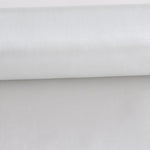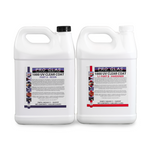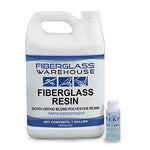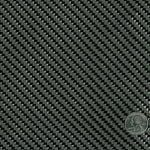You have no items in your shopping cart.
A fiberglass boat is an investment that requires regular maintenance to keep it in good condition. But despite your best efforts, wear and tear is inevitable, and you may need to repair your boat eventually. Fortunately, fiberglass boat repair is something you can do yourself. With a few tools, materials, and the right knowledge, a DIY repair can save you a lot of money.
In this tutorial, we will walk you through some things you need to know about repairing a fiberglass boat. We’ll go over the tools and materials needed, as well as the steps you need to take to ensure your boat is repaired correctly. By the end of this post, you will have some knowledge and confidence to start a fiberglass boat repair on your own.
Assessing the Damage
The first step in repairing a fiberglass boat is assessing the damage. You need to determine the extent of the damage and whether it's structural or cosmetic. A damaged hull can be repaired, but if the damage is extensive, you will want to look at hiring a professional. With that said, you can utilize the following tips to assess the damage of your fiberglass boat properly:
-Assess the damage caused by external factors like accidents or collisions. This is important to do right away as the longer cracks or holes are left unrepaired, the more damage that can occur as water seeps in.
-Check for cracks, holes or depressions in the surface
-Check for any discoloration or changes in texture
-If the damage is located under the waterline, check for any water-filled areas
-Check for warped floor boards
Once you've assessed the damage, you can figure out the best way to start repairing your fiberglass boat.
Materials and tools
Next, you need to gather the necessary tools and materials. In most instances, you will need fiberglass mat or knit fabric, resin, hardener, a squeegee, rollers, sandpaper, a power drill, and a buffer. You’ll also need protective gear, like gloves, goggles, and a respirator, as the chemicals used in the repair process can be harmful. You may also need a gel coat depending on the resin you use and what was used on the surrounding area near the scratch or crack.
Repair the Damage
If your fiberglass boat has a scratch or crack, then you can fix it yourself. Here are the steps to follow:
-Clean the damaged area with a mild detergent and water, then sand it with 220 grit sandpaper. Clean with acetone.
-Apply fiberglass with an epoxy or vinyl ester resin over the damaged area. If the repair is not below the waterline, you can also consider polyester resin for the repair. Follow the instructions on the resin for specific resin to hardener mix ratios. You can use a roller and/or squeegee to work the resin into the fiberglass. If you are using chopped strand mat, you do not want to use epoxy resin. Epoxy resin and chopped strand mat are not compatible.
-Let cure.
-Sand the surface again with 220 grit sandpaper to remove any bumps or ridges
-Finally, apply a gelcoat to match the color of the rest of the boat. If you are using an epoxy resin, you will need to use a different type of paint. Gelcoat is polyester based and will not adhere to the epoxy resin. It will adhere well to a polyester or vinyl ester resin.
**If the hull has large cracks and holes, you might need a professional to help.
If the damage is in the core or floorboards of the deck, the repair may be more extensive but still possible to do on your own. Feel around for soft spots or any giving areas in the floor to asses. If there is any warping or soft spots, the deck will need to be repaired.
- Remove the bad floor boards
- Tear out any core material that may have rotted.
- Let the area completely dry before moving on. This is a must.
- Replace core material with a plywood, balsa, foam or honeycomb.
- Add new floor boards
- Caulk any holes and around hardware. This is important to avoid having moisture seep in and causing future damage.
- Use fiberglass and resin over the floorboards to seal. You will need the same materials and tools as repairing scratches and cracks.
- Once fiberglass and resin have been applied and cured, you can install the carpet if using. If you are not using carpet, make sure the final layer of resin has a wax in it so it cures tack free. Polyester and vinyl ester resin, without wax will cure tacky. If you are working with epoxy resin, then this is not an issue as it will cure without a tack.
If the damage appears to just be in the gel coat, this can be simpler to fix. For information on different issues you can have with the gel coat and how to fix it, read HERE.
Prevent Future Damage
After repairing your fiberglass boat, it is always a good idea to take steps to prevent future damage. Here are some general tips to keep your boat in good condition:
- Use boat covers when not in use
- Regularly clean your boat with mild detergents and water
- Wax your boat regularly
- Make sure all holes are thoroughly caulked around hardware.
- Follow the manufacturer's recommendations for boat usage and maintenance.
Conclusion
Repairing fiberglass boats is not as complicated as it sounds, but it does require attention to detail and patience. Be sure to take any precautions that will prevent future damage. With a little knowledge, skill, and patience, you'll have a well-maintained fiberglass boat that will provide you with endless hours of fun on the water.
Still have questions? Don’t hesitate to reach out to our knowledgeable customer service team. You can email us at sales@fiberglasswarehouse.com or give us a call at 1-833-669-7899.










